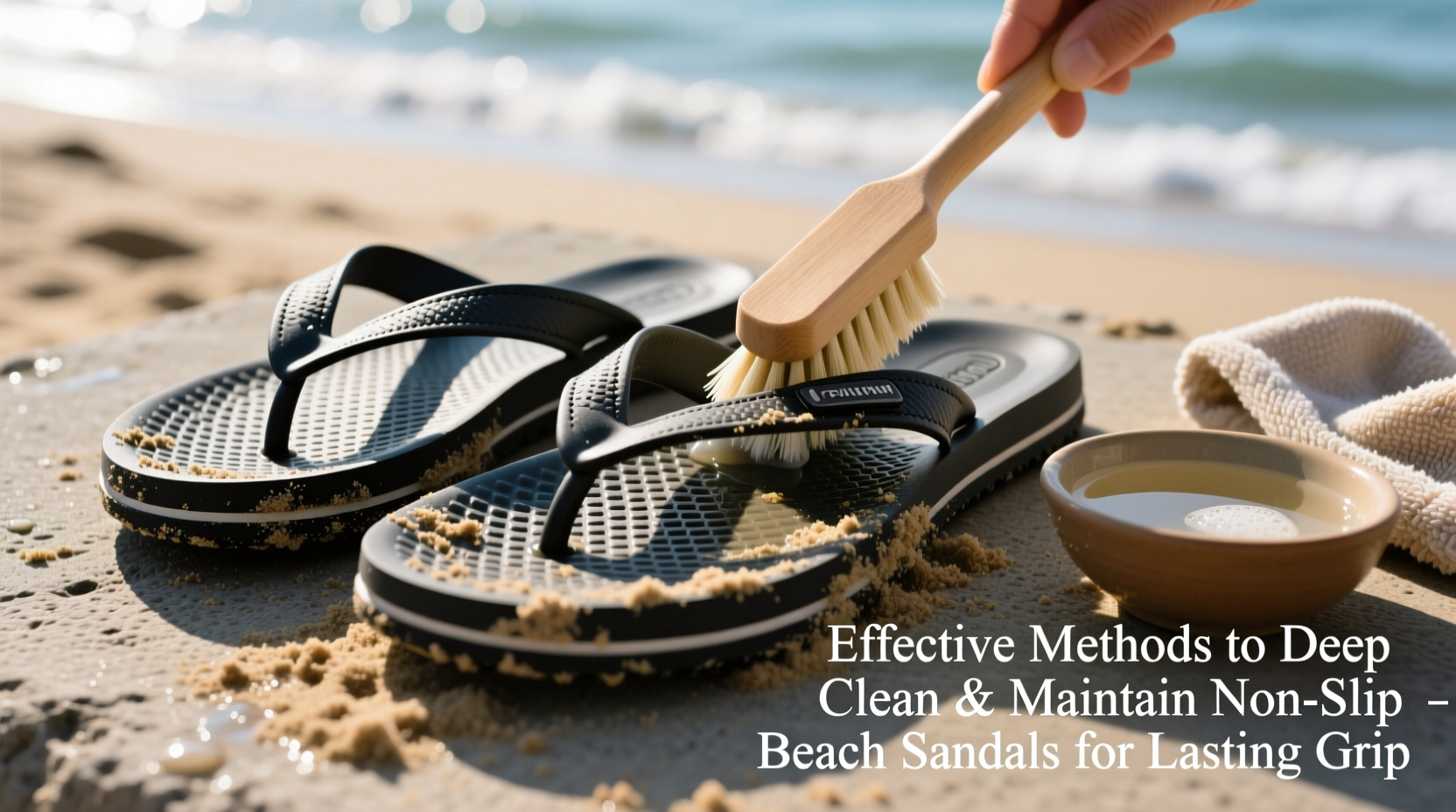Non-slip beach sandals are essential companions during warm-weather adventures, offering comfort, protection, and traction on wet or sandy surfaces. However, constant exposure to saltwater, sand, sweat, and UV rays can degrade their performance over time. The tread wears down, the straps loosen, and the once-reliable grip becomes slippery. Maintaining these sandals isn’t just about appearance—it’s about safety and longevity. With proper care, a quality pair of non-slip sandals can last for years, delivering consistent performance whether you're walking across a rocky shoreline or navigating a pool deck.
Understanding Non-Slip Sandal Materials and Design

Most non-slip beach sandals are made from synthetic materials such as EVA (ethylene-vinyl acetate), rubber, or polyurethane, chosen for their water resistance, flexibility, and shock absorption. The outsoles often feature deep treads, multidirectional lugs, or textured patterns engineered to channel water and increase surface contact. Straps are typically molded or attached with durable stitching or rivets.
The effectiveness of the non-slip feature depends on both material integrity and tread design. Over time, dirt, algae, and mineral deposits can clog the grooves in the sole, reducing traction. Additionally, prolonged sun exposure can cause the material to harden and crack, diminishing grip. Regular maintenance prevents these issues before they compromise function.
“Many people assume non-slip sandals are maintenance-free because they’re used in wet environments. In reality, neglect leads to faster degradation than any other factor.” — Dr. Lena Torres, Footwear Durability Researcher at Coastal Gear Labs
Step-by-Step Guide: Deep Cleaning Your Non-Slip Sandals
A thorough cleaning removes embedded debris, restores tread clarity, and eliminates odor-causing bacteria. Follow this timeline-based method monthly—or after heavy use—for optimal results.
- Remove Loose Debris (5 minutes): Shake off sand and rinse under lukewarm running water. Use a soft-bristled brush (like an old toothbrush) to dislodge particles stuck in the tread.
- Prepare Cleaning Solution (3 minutes): Mix one cup of warm water with one tablespoon of mild dish soap and one teaspoon of white vinegar. Avoid bleach or harsh detergents that can degrade synthetic materials.
- Scrub All Surfaces (10–15 minutes): Dip the brush into the solution and scrub the entire sandal—bottom, sides, footbed, and straps. Pay special attention to crevices where mold and grime accumulate.
- Soak for Stubborn Stains (Optional, 20 minutes): For yellowing or persistent stains, soak sandals in the cleaning solution. Do not exceed 30 minutes to prevent material swelling.
- Rinse Thoroughly (5 minutes): Rinse under clean water until all soap residue is gone. Residual detergent can attract dirt and irritate skin.
- Air-Dry Properly (6–12 hours): Place sandals upside-down on a drying rack or towel in a shaded, well-ventilated area. Never use direct sunlight or heat sources like radiators, which warp soles and fade colors.
Maintenance Checklist for Long-Term Grip Performance
Preventive care is more effective than restoration. Use this checklist every 2–4 weeks to keep your sandals performing at their best.
- ✅ Inspect soles for clogged treads or signs of cracking
- ✅ Clean straps and footbeds to prevent odor and bacterial buildup
- ✅ Rotate between multiple pairs if used daily to reduce wear
- ✅ Store in a cool, dry place away from direct sunlight
- ✅ Apply a silicone-based protectant spray quarterly (avoid petroleum-based products)
- ✅ Check strap attachments for loosening or separation
- ✅ Avoid dragging feet or walking on rough pavement unnecessarily
Do’s and Don’ts: Caring for Non-Slip Sandals
| Do’s | Don’ts |
|---|---|
| Rinse after exposure to saltwater, chlorine, or sand | Leave sandals in hot cars or direct sun for extended periods |
| Use a soft brush and pH-neutral cleaner | Machine wash or dry—agitation damages structure |
| Store flat or in original box with breathable fabric cover | Stack heavy items on top, which deforms soles |
| Apply UV-protectant sprays designed for synthetics | Use alcohol wipes or ammonia-based cleaners |
| Replace worn pairs when tread depth is visibly reduced | Ignore small tears or strap detachment—they worsen quickly |
Real Example: How Proper Care Saved a Season of Beach Trips
Jamal, a marine biology student in Florida, wore his non-slip sandals nearly every day during fieldwork—from tidal zones to boat decks. Within three months, the soles were stained green with algae, and the footbed developed a persistent odor. Instead of replacing them, he followed a deep-cleaning protocol similar to the one outlined here. After two treatments spaced two weeks apart, the sandals looked and performed like new. He now cleans them biweekly and reports no loss of traction, even on slippery rocks. His pair has lasted over two full seasons—double the average lifespan reported by peers who skip maintenance.
Frequently Asked Questions
Can I use baking soda to clean my non-slip sandals?
Yes, but sparingly. A paste of baking soda and water can help lift stains and neutralize odors. Apply gently with a cloth, then rinse thoroughly. Avoid abrasive scrubbing, as baking soda can scratch softer EVA foams over time.
How do I restore grip on worn-out soles?
If the tread is still intact but slick, deep cleaning often restores traction. If the rubber or EVA has hardened and flattened, grip cannot be fully restored. Consider using stick-on traction pads for temporary improvement, but replacement is recommended for safety.
Are all non-slip sandals machine-washable?
No. Most manufacturers advise against machine washing due to high agitation and spin cycles that can break straps or delaminate soles. Always check the care label. When in doubt, hand wash only.
Conclusion: Make Maintenance a Habit, Not a Chore
Lasting grip starts with consistent care. Non-slip beach sandals are built for tough conditions, but they still require attention to deliver peak performance year after year. By incorporating simple cleaning routines and smart storage habits, you preserve not only appearance but also safety and comfort. Whether you're hiking coastal trails, boarding boats, or strolling poolside, reliable footwear makes all the difference.









 浙公网安备
33010002000092号
浙公网安备
33010002000092号 浙B2-20120091-4
浙B2-20120091-4
Comments
No comments yet. Why don't you start the discussion?